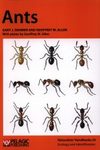Field / Identification Guide Identification Key
By: Trevor JC Beebee(Author)
170 pages, colour photos, colour illustrations
![Amphibians and Reptiles Amphibians and Reptiles]()
Click to have a closer look
About this book
Contents
Customer reviews
Biography
Related titles
About this book
Amphibians and Reptiles is a comprehensive guide to the native and non-native species of amphibian and reptile found in the British Isles. Professor Trevor Beebee covers the biology, ecology, conservation and identification of the British herpetofauna, and provides keys for the identification of adult and immature newts and newt eggs, larvae and metamorphs; frog and toad adults and metamorphs, spawn and larvae; adult and hatchling limbed lizards; and adult snakes. Distribution maps are included for all species, and Amphibians and Reptiles is illustrated throughout with colour photographs and figures.
The goal of Amphibians and Reptiles is to encourage readers to develop their own ecological studies, to this end, the author summarises the current state of knowledge of reptile and amphibian biology, including behaviour, breeding, habitat selection, migration and development, and offers ideas for research projects that could be undertaken to further what is known. A chapter is devoted to the practicalities of professional work with amphibians and reptiles, including licensing requirements. Research techniques, including survey methods such as night searches for newts and bottle trapping, are discussed in detail, and consideration is given to methods of data analysis.
Author royalties from Amphibians and Reptiles have been donated to Amphibian and Reptile Conservation.
Contents
1 Introduction
2 Basic biology
3 Ecology and Conservation
4 Surveying and monitoring
5 Working with amphibians
6 Working with reptiles
7 How schools can help
8 Identifying species found in Britain
Key I Adult and immature newts
Key II Newt eggs, larvae and metamorphs
Key III Frogs and toads (adults and metamorphs)
Key IV Frog and toad spawn
Key V Frog and toad larvae
Key V Adult and hatchling limbed lizards
Key VI Adult snakes
Distribution maps
9 Working with amphibians and reptiles: some basic essentials
10 Useful addresses and links
References
Index
Customer Reviews
Biography
Trevor Beebee's interest in amphibians was triggered, at age 11, by a chance visit to a pond near his home on the outskirts of Manchester. Two years later he moved to Surrey and encountered reptiles on the surrounding heath; so the scene was set of a lifetime of fascination with all the British species. Trevor subsequently obtained a degree in Biological Sciences at The University of East Anglia, followed by a PhD in biochemistry at the University of Sussex, before taking up a lectureship at Sussex and in 2003 becoming professor of molecular ecology there. Over the years he pursued a combined interest in research and conservation, mostly concerning amphibians (especially natterjack toads) but also with some work on reptiles. In the latter period Trevor became especially concerned about genetic aspects of conservation and the risks of population isolation and inbreeding depression. He has published over 150 scientific papers, more than 30 articles and several books on amphibians and reptiles including The Natterjack Toad, Frogs and Toads, Ecology and Conservation of Amphibians and, with Richard Griffiths, the New Naturalist volume (Amphibians and Reptiles) on these intriguing animals. He has a longstanding connection (since 1960) with the British Herpetological Society and served at various times as editor of its scientific journal, its chairman and its president. Trevor has been a trustee of the charity Amphibian and Reptile Conservation (previously called the Herpetological Conservation Trust) since its inception in 1989 and was awarded the Peter Scott Memorial Award by the British Naturalists' Association in 2009 for contributions to amphibian conservation. He retired to live in Somerset in 2012.
Field / Identification Guide Identification Key
By: Trevor JC Beebee(Author)
170 pages, colour photos, colour illustrations
"We can usually expect two things from a new book by Trevor Beebee – the benefit of a lifetime’s experience and, of course, clear, well-written text. I think both are delivered here. A non-UK colleague of mine told me he found this book “inspiring”. " --John W. Wilkinson, Herpetological Bulletin
"This Naturalists’ Handbook is very easy to read, encouraging those people interested in this aspect of natural history to be able to identify species and make a contribution to citizen science should they want to." --Helen Ashton, Reference Reviews






















































